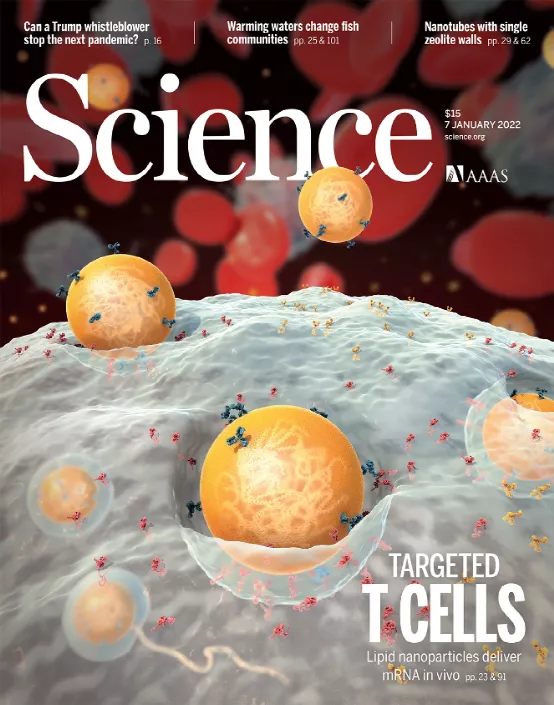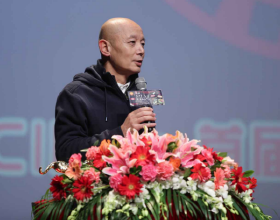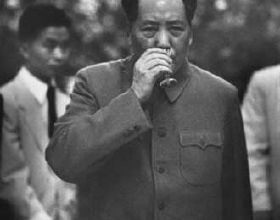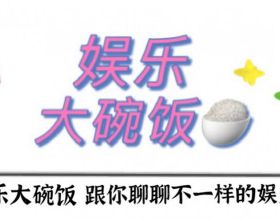編譯 | 未玖
Science, 7 JANUARY 2022, VOL 375, ISSUE 6576
《科學》2022年1月7日,第375卷,6576期
物理學Physics
Evidence for a delocalization quantum phase transition without symmetry breaking in CeCoIn5
CeCoIn5非對稱破缺離域量子相變的證據
▲ 作者:NIKOLA MAKSIMOVIC, DANIEL H. EILBOTT, TESSA COOKMEYER, FANGHUI WAN, JAN RUSZ, VIKRAM NAGARAJAN, et al.
▲ 連結:
https://www.science.org/doi/10.1126/science.aaz4566
▲ 摘要
量子相變研究與對稱破缺沒有明顯關聯,這是凝聚態物理學的一個重大研究方向,特別是高溫超導問題,這種相變被認為是超導機制本身的基礎。
研究組認為在典型的非常規超導體CeCoIn5中,假定的量子臨界點由連線兩個不同體積費米麵躍遷中的電子離域所表徵,沒有明顯的對稱破缺。
利用已建立的f-電子金屬理論,研究組討論瞭如何解釋這種涉及自旋-電荷分離的躍遷,該模型可有效描述他們測量霍爾效應的異常輸執行為。
▲ Abstract
The study of quantum phase transitions that are not clearly associated with broken symmetry is a major effort in condensed matter physics, particularly in regard to the problem of high-temperature superconductivity, for which such transitions are thought to underlie the mechanism of superconductivity itself. Here we argue that the putative quantum critical point in the prototypical unconventional superconductor CeCoIn5 is characterized by the delocalization of electrons in a transition that connects two Fermi surfaces of different volumes, with no apparent broken symmetry. Drawing on established theory of f-electron metals, we discuss an interpretation for such a transition that involves the fractionalization of spin and charge, a model that effectively describes the anomalous transport behavior we measured for the Hall effect.
材料科學Materials Science
Single-walled zeolitic nanotubes
單壁分子篩奈米管
▲ 作者:AKSHAY KORDE, BYUNGHYUN MIN, ELINA KAPACA, OMAR KNIO, IMAN NEZAM, ZIYUAN WANG, et al.
▲ 連結:
https://www.science.org/doi/10.1126/science.abg3793
▲ 摘要
研究組報道了具有微孔分子篩壁的單壁矽酸鋁奈米管的合成和結構。這種準一維分子篩由波拉型結構導向劑(SDA)組裝而成,該分子篩含有一箇中心聯苯基團,由C10烷基鏈連線到奎寧環端基。
高解析度電子顯微鏡和衍射及其他支援方法揭示了一種獨特的壁結構,它是兩種分子篩結構型別(β和MFI)的特徵構建層的混合體。這種混合結構產生於彎曲奈米管壁形成過程中應變能的最小化。
由於SDA分子的自組裝,奈米管的形成導致介觀結構的早期出現。SDA分子的聯苯核心基團證明了π堆積,外圍的奎寧環基團則證明了微孔壁結構。
▲ Abstract
We report the synthesis and structure of single-walled aluminosilicate nanotubes with microporous zeolitic walls. This quasi-one-dimensional zeolite is assembled by a bolaform structure-directing agent (SDA) containing a central biphenyl group connected by C10 alkyl chains to quinuclidinium end groups. High-resolution electron microscopy and diffraction, along with other supporting methods, revealed a unique wall structure that is a hybrid of characteristic building layers from two zeolite structure types, beta and MFI. This hybrid structure arises from minimization of strain energy during the formation of a curved nanotube wall. Nanotube formation involves the early appearance of a mesostructure due to self-assembly of the SDA molecules. The biphenyl core groups of the SDA molecules show evidence of π stacking, whereas the peripheral quinuclidinium groups direct the microporous wall structure.
Metastable Dion-Jacobson 2D structure enables efficient and stable perovskite solar cells
亞穩態Dion-Jacobson二維結構實現高效穩定的鈣鈦礦太陽能電池
▲ 作者:FEI ZHANG, SO YEON PARK, CANGLANG YAO, HAIPENG LU, SEAN P. DUNFIELD, CHUANXIAO XIAO, et al.
▲ 連結:
https://www.science.org/doi/10.1126/science.abj2637
▲ 摘要
三維(3D)有機-無機鹵化物鈣鈦礦太陽能電池(PSC)的效能可透過使用具有高效電荷傳輸的2D層狀鈣鈦礦進行表面處理來增強。
研究組最大化了亞穩態Dion-Jacobson(DJ)2D鈣鈦礦層的空穴傳輸,調整了不對稱大體積有機分子的定向排列。空穴傳輸的能壘降低後,面外傳輸速率提高了4~5倍,2D PSC的電源轉換效率(PCE)為4.9%。
透過亞穩態DJ 2D表面層,三種常見3D PSC的PCE提高了大約12%~16%,最終可高達約24.7%。對於三元陽離子混合鹵化物PSC,在約40℃的氮氣中,一倍太陽光強照射1000小時後,初始PCE仍可保持90%。
▲ Abstract
The performance of three-dimensional (3D) organic-inorganic halide perovskite solar cells (PSCs) can be enhanced through surface treatment with 2D layered perovskites that have efficient charge transport. We maximized hole transport across the layers of a metastable Dion-Jacobson (DJ) 2D perovskite that tuned the orientational arrangements of asymmetric bulky organic molecules. The reduced energy barrier for hole transport increased out-of-plane transport rates by a factor of 4 to 5, and the power conversion efficiency (PCE) for the 2D PSC was 4.9%. With the metastable DJ 2D surface layer, the PCE of three common 3D PSCs was enhanced by approximately 12 to 16% and could reach approximately 24.7%. For a triple-cation–mixed-halide PSC, 90% of the initial PCE was retained after 1000 hours of 1-sun operation at ~40°C in nitrogen.
Capturing the swelling of solid-electrolyte interphase in lithium metal batteries
觀測鋰金屬電池固體電解質中間相的膨脹
▲ 作者:ZEWEN ZHANG, YUZHANG LI, RONG XU, WEIJIANG ZHOU, YANBIN LI, SOLOMON T. OYAKHIRE, et al.
▲ 連結:
https://www.science.org/doi/10.1126/science.abi8703
▲ 摘要
儘管液-固介面是廣泛科學領域的基礎,但由於現有工具在奈米尺度上同時進入液相和固相存在缺陷,因此表徵這種微妙的介面仍然很困難。這導致人們對電池體系關鍵介面的結構和化學性質的理解存在很大差距。
研究組採用並改良了一種薄膜玻璃化方法,在天然液體電解質環境中保護電池中敏感而關鍵的介面,以實現低溫電子顯微鏡和光譜學觀測。
他們報道了各種電解液中鋰金屬負極上的固體電解質中間相(SEI)存在大量膨脹。膨脹行為取決於電解質的化學性質,且與電池效能高度相關。較高程度的SEI膨脹往往表現出較差的電化學迴圈。
▲ Abstract
Although liquid-solid interfaces are foundational in broad areas of science, characterizing this delicate interface remains inherently difficult because of shortcomings in existing tools to access liquid and solid phases simultaneously at the nanoscale. This leads to substantial gaps in our understanding of the structure and chemistry of key interfaces in battery systems. We adopt and modify a thin film vitrification method to preserve the sensitive yet critical interfaces in batteries at native liquid electrolyte environments to enable cryo–electron microscopy and spectroscopy. We report substantial swelling of the solid-electrolyte interphase (SEI) on lithium metal anode in various electrolytes. The swelling behavior is dependent on electrolyte chemistry and is highly correlated to battery performance. Higher degrees of SEI swelling tend to exhibit poor electrochemical cycling.
地球科學Earth Science
On the relative temperatures of Earth’s volcanic hotspots and mid-ocean ridges
地球火山熱點和大洋中脊的相對溫度
▲ 作者:XIYUAN BAO, CAROLINA R. LITHGOW-BERTELLONI, MATTHEW G. JACKSON, AND BARBARA ROMANOWICZ
▲ 連結:
https://www.science.org/doi/10.1126/science.abj8944
▲ 摘要
火山熱點被認為是由來自深部地幔的熱的、活躍的上升羽流供給的,其過餘溫度(Tex)比大洋中脊高約100~300℃。然而,Tex的估計被限制在地理覆蓋範圍內,且對於單個熱點往往不一致。
研究組透過將地震速度轉換為溫度來同時推斷海洋熱點和洋脊的溫度。他們表明,雖然約45%的羽流供給熱點很熱(Tex≥155℃),但約15%較冷(Tex≤36℃),且約40%的溫度不足以從深部地幔主動上湧(50℃≤Tex≤136℃)。
熱點具有極高的氦-3/氦-4比率和浮力通量,但較冷的熱點則不然。後者可能起源於上地幔深處,或供給它們的深羽流被小規模對流夾帶和冷卻。
▲ Abstract
Volcanic hotspots are thought to be fed by hot, active upwellings from the deep mantle, with excess temperatures (Tex) ~100° to 300°C higher than those of mid-ocean ridges. However, Tex estimates are limited in geographical coverage and often inconsistent for individual hotspots. We infer the temperature of oceanic hotspots and ridges simultaneously by converting seismic velocity to temperature. We show that while ~45% of plume-fed hotspots are hot (Tex ≥ 155°C), ~15% are cold (Tex ≤ 36°C) and ~40% are not hot enough to actively upwell (50°C ≤ Tex ≤ 136°C). Hot hotspots have an extremely high helium-3/helium-4 ratio and buoyancy flux, but cold hotspots do not. The latter may originate at upper mantle depths. Alternatively, the deep plumes that feed them may be entrained and cooled by small-scale convection.
公共衛生Public Health
Immune correlates analysis of the mRNA-1273 COVID-19 vaccine efficacy clinical trial
mRNA-1273新冠疫苗效力臨床試驗的免疫相關分析
▲ 作者:PETER B. GILBERT, DAVID C. MONTEFIORI, ADRIAN B. MCDERMOTT, YOUYI FONG, DAVID BENKESER, WEIPING DENG, et al.
▲ 連結:
https://www.science.org/doi/10.1126/science.abm3425
▲ 摘要
冠狀病毒效力(COVE)3期臨床試驗評估了疫苗接種者的中和抗體和結合抗體,並與COVID-19疾病風險和保護作用相關聯。在第二次接種疫苗時和4周後測量這些免疫標記物,且數值以標準化的世界衛生組織國際單位報告。
所有標誌物都與COVID-19風險呈負相關,並與疫苗效力直接相關。接種後50%中和滴度為10、100和1000的疫苗接種者估計疫苗效力分別為78%、91%和96%。
這些結果有助於確定與保護相關的免疫標記物,並有望指導信使RNA(mRNA)COVID-19疫苗和其他COVID-19疫苗的批准決策。
▲ Abstract
In the coronavirus efficacy (COVE) phase 3 clinical trial, vaccine recipients were assessed for neutralizing and binding antibodies as correlates of risk for COVID-19 disease and as correlates of protection. These immune markers were measured at the time of second vaccination and 4 weeks later, with values reported in standardized World Health Organization international units. All markers were inversely associated with COVID-19 risk and directly associated with vaccine efficacy. Vaccine recipients with postvaccination 50% neutralization titers 10, 100, and 1000 had estimated vaccine efficacies of 78% (95% confidence interval, 54 to 89%), 91% (87 to 94%), and 96% (94 to 98%), respectively. These results help define immune marker correlates of protection and may guide approval decisions for messenger RNA (mRNA) COVID-19 vaccines and other COVID-19 vaccines.




















